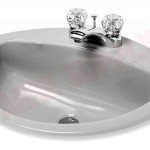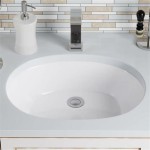Using Tile for Baseboard in Bathroom: A Stylish and Durable Solution
Bathrooms are often areas of high moisture and foot traffic, making it crucial to choose durable and aesthetically pleasing materials for finishing touches. Baseboards, which typically run along the bottom of walls, play a significant role in protecting the walls from damage and enhancing the overall visual appeal of the space. While traditional wooden baseboards are popular, tile offers a unique and practical alternative for bathroom baseboards, combining durability, moisture resistance, and a wide array of design possibilities.
Benefits of Tile Baseboards in Bathrooms
Tile baseboards bring several advantages to bathroom design and functionality:
1. Moisture Resistance:
Bathrooms are prone to moisture buildup from showers, baths, and humidity. Tile, being impervious to water, excels at preventing water damage to the walls. Unlike wood, which can warp or rot in humid environments, tile baseboards remain steadfast and unaffected by constant exposure to moisture, ensuring long-lasting durability.
2. Easy Cleaning and Maintenance:
Tile surfaces are smooth and non-porous, making them incredibly easy to clean. A simple wipe with a damp cloth and a mild detergent can quickly remove dirt, grime, and mold spores. Unlike wood baseboards, tile does not harbor moisture, minimizing the risk of mildew growth and promoting a clean and hygienic bathroom environment.
3. Durability and Resistance to Damage:
Tile is highly resistant to scratches, dents, and impact damage. This makes it an ideal choice for high-traffic areas like bathrooms where furniture may be moved or bumped against the walls. Tile can withstand the wear and tear of daily use, maintaining its structural integrity and aesthetic appeal over time.
4. Versatility and Design Freedom:
The tile industry offers an extensive palette of colors, patterns, textures, and sizes, providing endless possibilities for creating unique and personalized bathroom designs. From classic subway tiles to modern mosaics, you can find the perfect tile to complement your existing decor or create a bold new look.
Installation Considerations for Tile Baseboards
While installing tile baseboards can be a DIY project for skilled homeowners, professional installation is often recommended to ensure proper adherence and a seamless finish. Here are some key considerations for a successful tile baseboard installation:
1. Subfloor Preparation:
A smooth and level subfloor is essential for a proper tile installation. Ensure the existing baseboard is removed and the subfloor is free from imperfections or debris. If necessary, patching or leveling may be required before proceeding with the tile installation.
2. Waterproof Membrane:
A waterproof membrane should be applied to the wall surface below the tile baseboard to prevent moisture from penetrating the wall and causing damage. This membrane acts as a barrier, protecting the wall and ensuring a long-lasting installation.
3. Mortar Application:
A thin-set mortar is typically used to bond the tiles to the wall. Apply the mortar evenly to both the wall and the back of each tile, pressing the tile firmly onto the wall to ensure secure adhesion. Allow the mortar to dry completely before proceeding to the next step.
4. Grouting:
Once the tile is installed, grout should be applied to fill the spaces between the tiles. This creates a seamless and watertight barrier, preventing moisture from entering the wall behind the tile. Choose a grout color that complements the tile and consider using a sealant to protect against stains and mildew growth.
Design Ideas for Tile Baseboards in Bathrooms
Tile baseboards can be incorporated into bathroom designs in many creative ways:
1. Matching the Floor:
Using the same tile for both the floor and baseboard creates a cohesive and visually appealing look. This approach unifies the space and emphasizes the overall design theme.
2. Contrasting Colors or Patterns:
Adding a pop of color or a different pattern to the baseboard can create a striking and eye-catching design element. This approach adds visual interest and complements the overall style of the bathroom.
3. Decorative Tile Borders:
Incorporate decorative tile borders to create a unique and elegant touch. Borders can be used to define specific sections of the wall, adding visual interest and dividing the space. This approach allows for creative customization and personalization.
Using tile for bathroom baseboards offers a practical and aesthetically pleasing solution. Tile's durability, moisture resistance, and design versatility make it an exceptional choice for creating a beautiful, functional, and long-lasting bathroom design.

20 Ideas For Baseboard Styles Bathroom Tile

Loading Bathroom Baseboard Tile Styles

Subway Tile Bathroom Baseboards Design Ideas
Tile As Baseboard And Toekick Ceramic Advice Forums John Bridge

Subway Tile Bathroom Baseboards Design Ideas

Tile Skirting Vs Wood Baseboard Molding Nomadic Decorator

Tile Baseboard Bathroom 2 3 Mayflower Construction Group

Tile Baseboards Bathroom Baseboard Diy Decor

Bathroom Renovation How To Install Baseboards Trim Young House Love

Subway Tile Bathroom Baseboards Design Ideas







